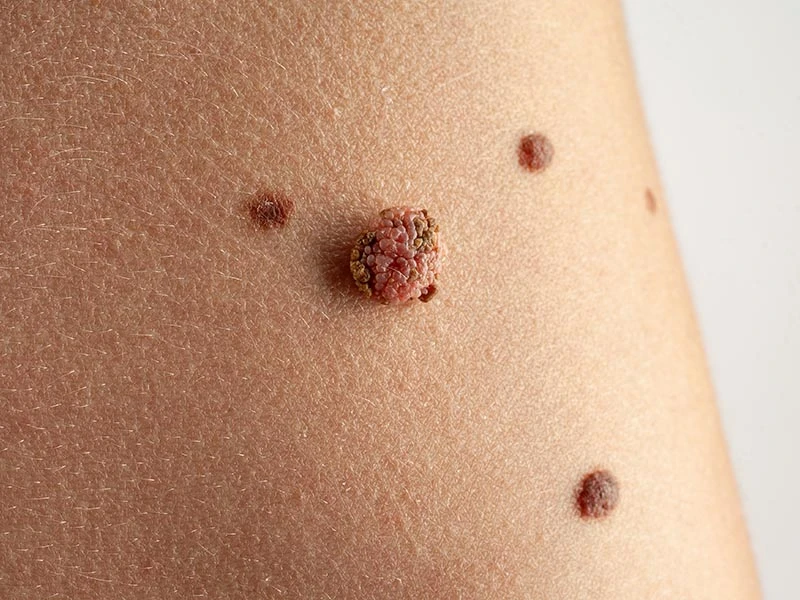At Dr. Tayyab saleem malik clinic (Cosmetic Enclave)
BCC, SCC, and malignant melanoma are the three most common types of skin cancer. Each type has distinct characteristics, treatment approaches, and prognoses. Here’s an overview of these skin cancers:
- Basal Cell Carcinoma (BCC):
- BCC is the most common type of skin cancer, typically developing in sun-exposed areas such as the face, neck, and arms.
- It usually appears as a raised, pearly bump with visible blood vessels, a central depression, or a non-healing sore.
- BCC grows slowly and rarely spreads to other parts of the body (metastasizes).
- Treatment options include surgical excision, Mohs surgery (layer-by-layer removal), cryotherapy (freezing), and topical medications.
- Squamous Cell Carcinoma (SCC):
- SCC arises from the squamous cells in the skin’s upper layers, often due to cumulative sun exposure.
- It typically presents as a firm, red nodule, a rough patch, or a sore that fails to heal.
- SCC can metastasize to nearby lymph nodes or other organs if left untreated.
- Treatment involves surgical excision, Mohs surgery, radiation therapy, and sometimes chemotherapy or targeted therapy.
- Malignant Melanoma:
- Malignant melanoma is the most aggressive and deadly form of skin cancer, arising from pigment-producing cells called melanocytes.
- It can develop in existing moles or appear as new, irregularly shaped lesions with asymmetrical borders, uneven coloration, and a larger diameter (the ABCDE criteria).
- Melanoma has the potential to metastasize to other parts of the body and requires early detection and treatment.
- Treatment includes surgical excision, sentinel lymph node biopsy, immunotherapy, targeted therapy, radiation therapy, and chemotherapy.
Early detection is crucial for successful treatment and improved outcomes in all these skin cancers. Regular self-examinations and annual dermatological check-ups are recommended to monitor any changes in the skin and identify potential cancerous lesions. Sun protection measures, such as wearing sunscreen, protective clothing, and avoiding excessive sun exposure, can help prevent these skin cancers.
If you notice any suspicious skin changes, such as new growths, changes in existing moles, or non-healing sores, it is important to consult a dermatologist for a professional evaluation and appropriate management.

